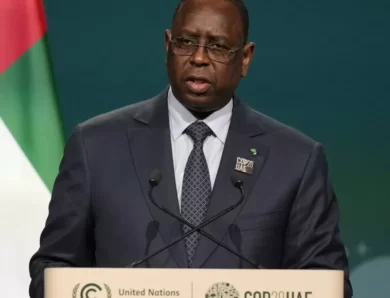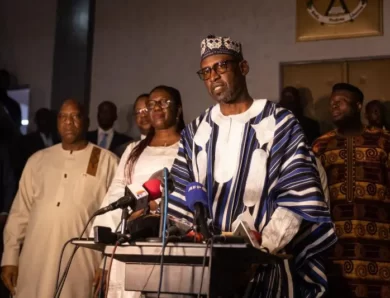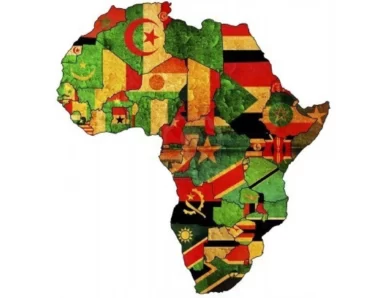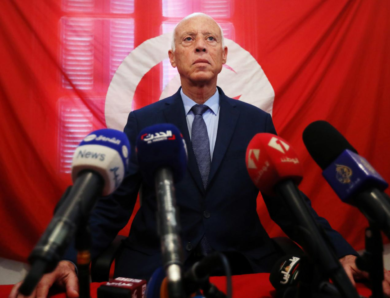
The Path to Scottish Independence: from the Treaty of Union to the Brexit fiasco
“May she sedition hush; And like a torrent rush; Rebellious Scots to crush; God save the Queen”. Thus, ends one of the most famous anthems in the world, that of the United Kingdom of Great Britain and Northern Ireland. Though it may seem merely symbolic, Scotland is here, at the heart of British identity, intimately associated with the ideas of rebellion and dissidence, seditious habits that must be systematically repressed. The political context of Brexit has given the already historically tense – to say the least – Anglo-Scottish relations a dramatic turn: will Scotland remain part of the United Kingdom?
 Or will it secede to join the economically lagging European Union, putting an end to a three hundred years old relationship? As Europe and the world are facing a “populism crisis”, nationalist questions are far from welcome in the oldest democracies we know. The legacy of the 1707 Treaty of the Union, the 1998 Parliament Act and the Scottish Referendum of 2014 are landmarks worth analysing as the year 2020 may be that of a newly independent Scotland.
Or will it secede to join the economically lagging European Union, putting an end to a three hundred years old relationship? As Europe and the world are facing a “populism crisis”, nationalist questions are far from welcome in the oldest democracies we know. The legacy of the 1707 Treaty of the Union, the 1998 Parliament Act and the Scottish Referendum of 2014 are landmarks worth analysing as the year 2020 may be that of a newly independent Scotland.
A brief look back on Anglo-Scottish relations
Although some still want to believe union was achieved after the death of Queen Elizabeth I in 1603 – who died with no apparent heir – and the rise to power of James I of England who was then already James VI of Scotland, little was formally achieved by this union of the two crowns under this one monarch. Aside from the now world-famous Union Jack which dates back to this union, it may make more sense for our purpose to think of the year 1707 as the real birth of the Anglo-Scottish union which would eventually lead to the political construct we now know.

It was under the reign of Queen Anne that negotiations took place in London and Edinburgh regarding the question of political union between the two rival kingdoms. Although reports at the time specified that “for every Scot in favour there is ninety-nine against”[1], the threat of war with France – an eternal threat for Britons until the 20th century – and the use of bribes finally convinced the Scottish Parliament to vote for this proposed union. This treaty gave birth to the Parliament of Great Britain, burying the Scottish Parliament for 292 years. Moreover, this accord also gave Scots the right to send representatives to London, to keep a court system of their own, some of their educational institutions and systems of local governance but, most importantly for a majority of Scots, the Church of Scotland – which is Presbyterian – did not suffer the consequences of this political treaty. Indeed, the English monarch is not the Head of the Church of Great Britain but the Head of the Church of England. Although this may seem rather negligible, this detail symbolises the artificialness of this ancient union passed between two ancient foes of two different cultures.
Bribes, fear of invasion and political discussion without popular assent or genuine cultural affinities or resemblance makes it hard to consider it as a natural union of peoples and territory. Nonetheless, this process largely took place peacefully and its results, if one may say so, can be considered rather successful. It should be pointed anyway that throughout these peaceful centuries, Scots hardly referred to themselves as Brits, whereas the English saw themselves more easily as Brits part of a greater kingdom. The only way Scots considered their identity within the United Kingdom of Great Britain and Northern Ireland was through the imperial lens. Indeed, Scottish soldiers were crucial to British imperial expansion in many ways, and this led to a more genuine sense of legitimacy and belonging to a united nation. Scottish regiments – fusiliers and such – are famous in British military history and have thus helped build a common history and heritage to which one can now refer to in order to build an ex post facto legitimacy to the union.
First steps towards devolution (1967-1997)
In 1967, at the Hamilton by-election in the lowlands of Scotland, the Scottish National Party (SNP) won its first parliamentary seat. While already active on the political scene for a few decades, this surprise victory in one of Labour’s safe constituencies fast-tracked the SNP onto the political and mediatic landscape of Great Britain. This, among other things, eventually led to the setting up of a royal commission on the constitution – or the Kilbrandon Commission – which was meant to investigate any and all forms of constitutional reform that would positively impact the Kingdom in the face of political demands for more autonomy. Although this commission was initiated under a Labour government that might have been more conciliant, its work continued under a Tory government which refused any proposal which might threaten the integrity of the Union. Federalism, confederal projects, independence and many other ideas were rejected, and only devolution proposals ever made it to the final text in 1973. However, none of these proposals ever saw the light of day.
One would have to wait for another Labour government, that of James Callaghan, to see these proposals enter the legislative field. This pre-Thatcher government was less hostile to these devolution ideas and more prone to look for active solutions to the inevitable question of Scottish independence. Nonetheless, the process was hastened by the political composition of the House of Commons in 1976, when Labour lost its narrow majority and had to make do with Plaid Cymru – the Welsh Nationalist Party that was also knowing some electoral success both in England and in Wales – and the SNP. At the time, it seemed the Scottish nationalists and their Welsh counterparts would benefit from this electoral conjuncture. The minority Labour government thus worked for two years to draft the Scotland devolution act of 1978, one that would resemble its future edition. However, this referendum was designed with a very specific loophole that would eventually benefit Westminster. Indeed, both devolution acts stipulated that 40% of the electorate had to vote Yes for these to be rightfully implemented. Whether this legal adjustment was accepted by the nationalists without question or not is unclear. It is likely that the Government’s concessions were deemed great enough and that the Scots trusted their electorate a little too much. And so, on March 1st, 1979, to the question “Do you want the provisions of the Scotland Act 1978 to be put into effect?” although 51.6% of the voters said yes, as the voter turnout was only of 63.6%, this meant that only 32.9% of the effective Scottish electorate chose to support the aforementioned devolution plans, failing to reach the unsurprisingly high threshold. This result was an immense defeat for both nationalists and the Labour government, the latter suffering immediately from a confidence crisis in the country. And as the Iron Lady Margaret Thatcher entered Downing Street later that same year, the idea of devolution was rejected at the doorstep.
It took some time for Scots to get back on their feet and resume their fight for autonomy. Although a campaign for a Scottish Assembly was quickly established to continue the works, it is not until 1989 that a Scottish Constitutional Convention (SCC) convened in the Assembly Hall in Edinburgh and drafted the Claim of Right for Scotland, proclaiming with this the “sovereign right of the Scottish people to determine the form of government best suited to their needs” and agreeing to find “a scheme for an Assembly or Parliament for Scotland” as well as “to mobilise Scottish opinion and secure the approval of the Scottish people for that scheme”[2]. This Scottish Constitutional Convention innovated greatly as it included a large variety of political parties, groups and organisations determined to work together and find a consensual solution for Scotland to obtain some devolution powers. Indeed, it included the Scottish Labour Party, the Scottish Liberal Democrats, the Scottish Green Party, as well as the Communist Party, the Scottish Trades Union Congress or the two largest churches of the country. However, although it is obvious why Conservatives would boycott this Convention, the reason for the absence of the SNP is less clear and is said to have been in fear of a possible dominance of the Labourites within this organisation, which would prevent the idea of total independence to be discussed. And in 1995, this Convention came up with a document called Scotland’s Parliament, Scotland’s Right, which laid out the constitutional bases of a devolution agreement with England, thus establishing that a Scottish legislature would be reborn, centuries after the Treaty of Union.
From the Devolution referendum to the Independence Referendum (1997-2014)
In May 1997, Tony Blair’s Labour government was elected with the promise of a devolution referendum for Scotland, a referendum that would consecrate the resurrection of Scottish parliamentarism as well as Scottish executive power. On September 11th, 1997, the long-awaited referendum took place, for which every Scottish politician had to put their differences aside to agree on this first step, as well as the right for Scottish citizens to decide for themselves. Campaigners agreed this compromise would serve them best, allowing the creation of a new Scottish parliament would let every political group defend their institutional projects within a legislative process.
Two questions were asked, one on whether there should be a Scottish parliament, the other one regarding tax-varying powers incumbent to the aforementioned legislature. The results were thus overwhelming: the voter turnout was of 60.4% – giving the following results some greater legitimacy than the previous referendum – 74% voted in favour of the first question, 63% in favour of the second question. This historic decision confirmed decades of political activism and constitutional hard work.
Westminster followed on to these promises and passed the now famous Scotland Act on November 17th, 1998, outlining the devolution powers Scotland would now receive, some of them being the ones the Scottish Office had been exerting for some time, others brand new, concessions to the ruthless Scottish independentists and symbols of their victory. Amongst these powers were those over health, education, housing, environment, agriculture, forestry, fishing, economic development, civil and criminal law, its justice system, police, fire services, local government, planning and licensing, sport and the arts as well as the power to levy some local government taxes. Although the list may be long, the powers and prerogatives Westminster kept to itself are just as long and undoubtedly far more important. Indeed, the British government and legislature are still the highest authorities on fiscal, monetary & economic policies, defence, foreign affairs, nationality and immigration, social security and pensions, energy, competition law, intellectual property law, transports, employment law, health & safety regulations, consumer production and broadcasting powers.

This division of powers and prerogatives was – and still is to some extent – enough for most of the advocates of a devolution referendum and the organisations part of the Scottish Constitutional Convention. On the other hand, Alex Salmond – leader of the SNP from 1990 to 2000 and then again from 2004 to 2014 – and his fellow SNP associates saw this devolution act as only a first step towards total independence, an occasion to galvanise Scots and prepare, both inside and outside the newly defined Scottish houses of power, for more demands to the central authorities in London. Indeed, the fact that Scotland is not able to deal with her own transports, broadcasting powers or energy is highly contestable and has been contested ever since the first Scottish parliament first sat on May 6th, 1999. However as Scotland was ruled by Labour government unsympathetic to the nationalist cause – under 1st Ministers Donald Dewar, Henry McLeish & Jack McConnell – it seemed Tony Blair’s historic moment would be one to remember, one that would have brought appeasement to the difficult union of James’s crowns.

This devolutionist peace and stability was not to last. The same Alex Salmond who had put his ego aside for the 1997 campaign, who had reneged his true stance on Scottish history and legitimate empowerment, came to form a minority government in Edinburgh. Their newfound majority in Parliament ensured they could enforce their political vision, one that would go and clash with the devolution agreements previous British governments had worked hard on, both to draft and to implement. They thus launched a National Conversation on Scotland’s constitutional future, a nationwide process meant to probe the population and the activists, to explore options for constitutional and institutional reform within the United Kingdom.

This decision was honoured by the Brown government as they responded by setting up a commission, one that came to be known as the “Calman commission”. This pro-union commission convened monthly for a year or so to establish that the devolution concessions previously mentioned had been largely successful for every party involved in such a deal, and only proposing a few minor changes, some enhanced devolution powers – on drink driving limits or air weapons – and tax-raising powers that were only partially (or for some of them completely forlorn in the process) integrated into the Scotland Act 2012, voted in May of that same year. However, the SNP was not to be intimidated by these proceedings. In 2009, they published their White Paper – also known as Scotland’s Future – which laid out the antagonistic options dear to the SNP’s program, emphasising their struggle on independence and maximal devolution from Westminster.
Cameron’s victorious bet: the 2014 referendum
Although the British government – now in the hands of the most important yet most careless Tory of this story – had started working on the results from the Calman commission, the SNP reinforced their legislative majority in Holyrood in 2011, strengthening ever more their claim for independence. And here enters the jolly negligent David Cameron that would later come to regret everything that would result from his choices. This meant the opportunity for referendum had just been rendered possible. Negotiations started at once between the two governments, using the references and precedents I have discussed at length, culminating with the Edinburgh Agreement in 2012. This deal set out the details for an independence referendum to take place before the end of the year 2014, allowing only one question that was to be as clear and unambiguous as possible so as not to cause any constitutional complexifications, and circumscribing the referendum to full-time residents on Scottish territory.

The Yes Scotland and Better Together campaigners started fighting for nearly two years, and although the balance was highly unfavourable for the independentists at first – one of the reasons Cameron had so easily accepted – the result was much more disputed than anticipated. The unionists collected 55.3% of the votes, with a record 97% voter registration and 84.6% turnout – signalling the great success in mobilising Scots for this crucial poll. However, the independents’ failure to raise popular support for their cause seemed to signify the end of all claims for Scotland’s rightful independence. Alex Salmond was forced to resign from his position as leader of the SNP and First Minister of Scotland, institutionalising and mediatising a great victory for Cameron, one less pebble in the Tories’ shoes.
Nonetheless, the spark was kept alive by Salmond’s right-hand woman and political successor – Nicola Sturgeon – officially claiming that the path to Scottish independence would not end so abruptly.
Cameron’s lost bet: the 2016 referendum
Although Brexit is a painfully familiar situation for anyone willing to read an article on Scottish claims to independence, it may be useful to recall a few facts to keep the context in mind. In other words, as Cameron was emboldened by his victory over the SNP, he was tempted to do the same with a minority wing of his own party, known as Eurosceptic, that proved difficult to manoeuvre with, as well as with UKIP, the far-right party which kept gaining ground on the Tories. This audacious attitude was concretised with the infamous referendum on June 23rd, 2016, ending with the surprise victory of the Leave campaign with 51.9% on the whole of the United Kingdom. But what of Scots? Scots largely rejected this masochistic referendum! 62% of them voted Remain, the number flying as high as 74.4% for Edinburgh.

The results of this unwanted referendum, highly tainted by internal Westminster politics, was a long political process that would entail a forced disunion, a divorce without their consent as not a single Scottish county supported this desire for departure from the large economic union that is the European Union.
Cameron’s cataclysmic failure reshuffled the cards for the SNP. This meant union could not be brandished by political opponents to oppose the independence programme so dear to Sturgeon and her colleagues. However, even the most ruthless politicians were stunned by the results of the Brexit referendum. They could not seize the opportunity immediately, they just knew this chaos could benefit them greatly. As the political situation in Westminster came to look like a schoolyard where neither headmaster John Bercow nor the headteacher Theresa May could assert their authority or even know what they really wanted. The SNP members champed at the bit but eventually the situation cleared, as a true bulldog entered Downing Street.
Britain’s lost brother in arms? A referendum to come
Here comes the deadlock we now face. The United Kingdom of Great Britain and Northern Ireland is no longer a member of the European Union although its very members dispute this premature departure. Every political analyst, every journalist is now waiting for Scotland to make a move. And so, on December 19th, 2019, the SNP leader and Scotland’s First Minister wrote a letter to BoJo to formally ask for the powers to stage a referendum in Scotland about this long-coming independence they deserve. Six years ago the Scottish political class (outside of the SNP and other independentist parties) was largely divided if not wholly against the sole idea. This is not so much the case. Holyrood recently passed a motion demanding that Downing Street and Westminster come to their senses and allow Scots to decide for their own political future without constant scrutiny from high-handed and indifferent Eton and Cambridge alumni.

However, both demands have been royally declined, completely overlooked by a government which thinks the Irish question is the only one Brexit raises. No English Tory will ever accept that leaving the EU behind means leaving Scotland behind too. No money- and power-hungry conservative will ever want to lose Scotland’s oil resources or deal with the nuclear warheads cleverly concealed in the Highlands so far north for the Londoners that they forgot they even put them there in the first place. And that no Scot in Holyrood will want to keep nuclear weapons in his backyard.

The situation is rather unclear right now in Scotland. The political activists of All Under One Banner have been organising protests and demonstrations for years now, marching in Glasgow and Edinburgh with the cross of Saint Andrew, demanding Scottish independence at once. Although these demonstrations did not make enough noise these last 5 years of political uncertainty in London and Edinburgh, the recent events on January 31st have opened the door to a more plausible outcome for Scottish nationalists. Several political analysts and EU officials are now claiming that an official application from Scotland to join the EU, Schengen and the Eurozone would be almost immediately accepted (however, the formal entry into the EU would still take a considerable amount of time due to the required heavy bureaucratic procedures). Indeed, losing the pound and returning to Scotland’s ancient currency would likely damage greatly the Scottish economy; there is little doubt that England would refuse to let the Scots use the pound were they to vote for their independence from the Crown.

Will the British government accept some more devolution powers in order to keep Sturgeon and her comrades at bay? Will Scotland be another Catalonia and try an illegal referendum? Will Sturgeon end in prison for high treason? Will Johnson or his successor bend and allow such a referendum? Will a potential – although not very likely – Labour PM see it any different? Will the saddled unicorn finally kiss goodbye to the untamed lion?
Florian Mattern
[1] Jenkins, A Short History of England p. 163.
[2] Priddy, Claim of Right for Scotland, p. 11.
Sources:
- Tom Mullen, “The Scottish Independence Referendum”, Journal of Law and Society 41/4 (2014), pp. 627-640.
- Simon Jenkins, A Short History of England (Profile Books: London, 2012)
- Richard Dewdney, Results of Devolution Referendums (1979 & 1997), Research Paper N°97/113 (House of Commons Library, Social & General Statistics Library: November 10th, 1997)
- Terence Daintith, “Kilbrandon: The Ship That Launched a Thousand Faces?”, The Modern Law Review 37/5 (1974), pp. 544-555.
- Sarah Priddy, Claim of Right for Scotland, Debate Pack N°2016-0158 (House of Commons Library, September 2nd, 2016)
- https://www.bbc.com/news/av/uk-scotland-41228211/scottish-devolution-vote-from-the-archive
- https://www.bbc.com/news/uk-scotland-scotland-politics-41189455
- http://www.legislation.gov.uk/ukpga/1998/46/contents
- https://www.theguardian.com/politics/2013/nov/26/scottish-government-publishes-white-paper-on-independence-politics-live-blog
- Scotland’s future: your guide to an independent Scotland, The Scottish Government – available at https://www.scotreferendum.com
- https://www.bbc.com/news/politics/eu_referendum/results
- https://www.theguardian.com/politics/2020/jan/14/boris-johnson-refuses-to-grant-scotland-powers-to-hold-independence-vote
- https://www.tagesspiegel.de/politik/grossbritannien-tritt-aus-der-eu-aus-schottland-wird-unabhaengig/25403664.html
- https://www.independent.co.uk/news/uk/politics/scottish-independence-referendum-nicola-sturgeon-snp-msp-a9308756.html
- https://www.scotsman.com/news/politics/unison-members-back-second-scottish-independence-referendum-1-5084341







No Comment